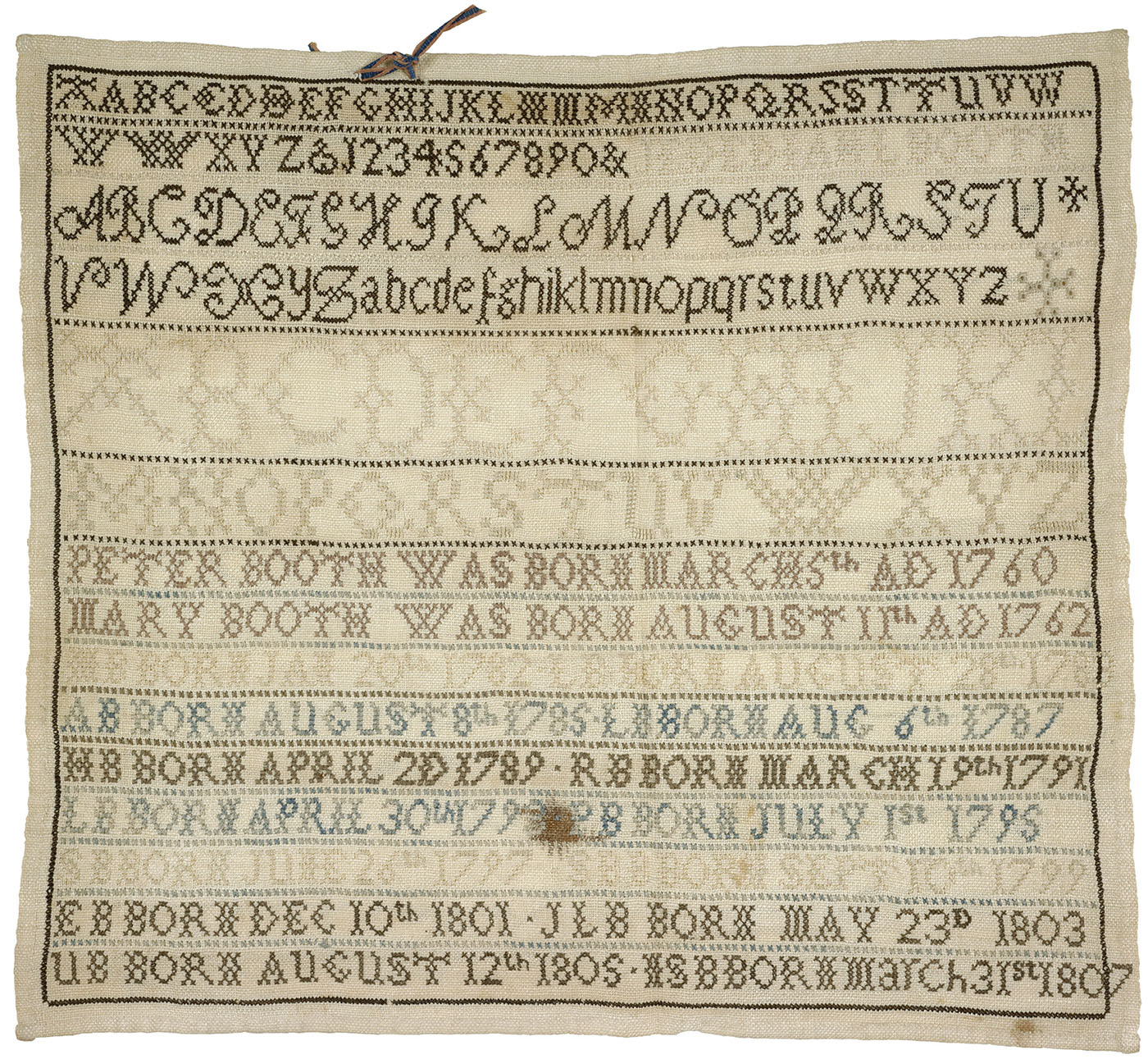
Preserving Textiles
Summer 2016, Vol. 48, No. 2 | Your Family Archives
By Mary Lynn Ritzenthaler
Just as with treasured letters and photographs, people pack away and save textiles that have special meaning, oftentimes because they were worn, made, or used by a family member. They range from baby clothes to uniforms, flags to samplers, and quilts to perhaps a 1920s-era dress worn by a flapper.
Articles may be made of a specific textile (cotton, linen, wool, silk, synthetic), or a composite of many, and can include threads, buttons and fasteners, and decorative attachments, with varying potential for permanence and durability, depending how how it was constructed, worn, and used.
As with paper-based materials, textiles last longest if they are stored in the dark—so light does not fade colors or weaken fibers. Textiles can attract rodents, moths, and insects, especially in damp conditions, so be alert to any holes eaten in the fabric, staining, webbing, and dead carcasses.
Storing: Store textiles in a cool, dry location. Avoid using trunks or boxes in hot attics or in damp basements or garages. Damp conditions can encourage the growth of mold as well as attract insects. An environment comfortable for people is suitable for textiles.
Handling: To avoid causing stress, especially on older textiles, handle all textiles gently with two hands. Large items, such as antique quilts, often cannot bear their own weight safely, so support them with a box or a support board if they have to be lifted. The two-hands approach will help to keep items from becoming distorted and misshapen. Make sure your hands are clean. While unfolding items, stop if your actions seem to be causing damage.
Cleaning and Mending: Consider the value and condition of your textiles before undertaking any washing, mending, or dry cleaning. Antique or collectible textiles may have monetary value in addition to sentimental value, while such things as contemporary baby clothing may have only utilitarian value. Avoid cleaning items that have antique or monetary value or that are in poor condition. Washing and dry cleaning can have unintended consequences; colors may run or bleed, and agitation during the cleaning process can cause structural damage. Similarly, except for items of utilitarian value, it is best to leave items in their original state and to avoid mending or repairing them.
Housing: Many archival and preservation suppliers sell boxes designed specifically for storing textiles. Store antique textiles flat, with as few folds as possible. If large items must be folded for storage, minimize the number of folds and make sure the folds do not become creases. Acid-free tissue paper can be folded and rolled into different shapes and placed within a fold to soften it. Objects such as hats and embroidered purses can be lightly stuffed with tissue paper to help them keep their shapes. Roll large flat textiles, such as quilts, around the outside of large-diameter acid-free cardboard tubes; place rolls inside boxes or cover with muslin to protect them from dust and light. Do not hang antique garments; flat storage is best.
Displaying: All types of light can damage textiles, with sunlight and fluorescent light being of major concern. Store textiles in the dark and limit long-term display. The size, weight, and structure of many textiles make them challenging to display safely. Contact a textile conservator to discuss mounting techniques.
The American Institute for Conservation provides a free referral service for locating a conservator in your area: www.conservation-us.org.
Find more information on this topic at www.archives.gov/preservation.
Mary Lynn Ritzenthaler is chief of the National Archives Conservation Laboratory.
